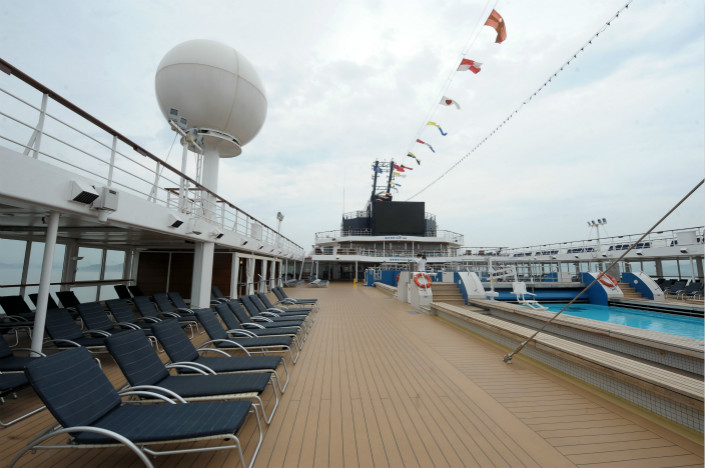Ctrip to Cruise Away From Royal Caribbean Joint Venture

Leading Chinese travel platform Ctrip will end its joint venture cruise line with Royal Caribbean, as competition from foreign operators intensifies and domestic tourism softens.
The pair will shutter the SkySea Cruise Line later this year, and sell its Golden Era cruise ship to Marella Cruises, a subsidiary of Germany tourism giant Tui AG, according to a statement from Ctrip.com International Ltd.
Ctrip acquired Royal Caribbean Cruises Ltd.’s 1,814-passenger cruise ship Celebrity Century in 2014, renaming it Golden Era and beginning operations in May 2015. It was the first contemporary cruise line specifically developed for the China market. By the time of its upcoming final voyage, SkySea will have carried nearly 500,000 guests on 300 cruises, Ctrip said.
“The cruise market in China is still in early stages but holds big potential,” Ctrip said.
In 2017, there were fewer than 3 million cruise passengers in China, much less than the 10 million passengers from the U.S. market, Ctrip said.
Foreign operators have also increased competition in the market. Multinationals like Carnival Corp & PLC and Star Cruises have flocked to the emerging market and localized their services. Carnival’s luxury liner Majestic Princess, for instance, is equipped with karaoke rooms and a mahjong gaming area.
The competition has led to closures of some domestic brands, which lack experience and brand awareness. HNA Cruises, a subsidiary of the airlines-to-finance conglomerate HNA Group, stopped running its Henna cruise in 2015, nearly three years after it set sail in China.
Henna had been in the red for years due to competition from foreign companies like Costa Crociere and Carnival, an HNA Cruises employee told Caixin at the time.
“Although we have a lot of customers, the company faces fierce competition,” he said.
However, foreign companies are seeing weaker-than-expected results in China as well. Royal Caribbean, which separately runs two ships, said the demand from the China market was “softer than anticipated” in its annual report in 2016. Carnival said in its 2017 annual report that its improvements in its Caribbean, European and Alaskan lines were “partially offset by decrease in our China programs.”
Due to geographic conditions, more than 95% of cruise journeys starting in China head to Japan or South Korea, so the industry largely depends on good diplomatic relationships among the countries, according to a 2017 report by Shanghai International Cruise Economic Research Center.
In 2013, HNA’s Henna was briefly detained by South Korean authorities, with more than 1,600 passengers and crew-members on board, after another shipping company sent a detention request, saying HNA Group and a subsidiary owed it sizable unpaid debts.
Last year, more than 3,000 Chinese cruise passengers who had berthed at South Korea’s Jeju Island refused to go ashore at a time of tense Sino-South Korean relations, after Seoul agreed to deploy a U.S. anti-missile system that Beijing strongly opposes.
The number of Chinese cruise travelers increased an average of 40% per year from 2006 to 2016, but only 8% from 2016 to 2017, according to a report by Huajin Securities, citing an industrial forum.
Shares of Nasdaq-listed Ctrip dropped 0.3% on Wednesday. The company said it will “continue to work closely with all the cruise lines in the world, including Royal Caribbean.”
Contact reporter Coco Feng (renkefeng@caixin.com)

- 1Cover Story: Chinese Medicine Injections Face Rigorous Regulation for the First Time
- 2France to Receive New Panda Pair Under Renewed 10-Year Deal With China
- 3Wingtech Rebuts Nexperia Claims as Control Fight Threatens Global Chip Supply
- 4 China Flu Cases Surge to Highest Level Since 2022
- 5BYD Overhauls Payment System as China Tightens Oversight
- 1Power To The People: Pintec Serves A Booming Consumer Class
- 2Largest hotel group in Europe accepts UnionPay
- 3UnionPay mobile QuickPass debuts in Hong Kong
- 4UnionPay International launches premium catering privilege U Dining Collection
- 5UnionPay International’s U Plan has covered over 1600 stores overseas






